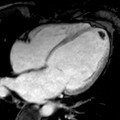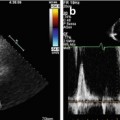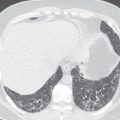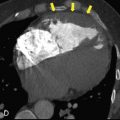Many dentists struggle to see hidden details in dental problems using regular X-rays. CBCT gives 3D images that show more than traditional scans.
This article will explain how CBCT can improve diagnosis, treatment planning, and patient care for many dental needs beyond just implants.
Read on to learn how this technology can help your practice grow.
What is CBCT in Dentistry?
Cone Beam Computed Tomography, or CBCT, uses a special X-ray machine to create clear 3D images of the teeth, jawbone, nerves, and surrounding tissues. Dental practices use CBCT to gain highly detailed views that standard 2D dental X-rays cannot provide.
The multiplanar reconstruction feature lets dentists see anatomical structures from different angles without overlap.
CBCT scans improve treatment planning by revealing root shapes, nerve locations, bone quality, and sinus positions in real time. Scans are quick and expose patients to less radiation than traditional medical CT scans.
Dental teams can spot issues earlier using CBCT for diagnostics and patient assessment in restorative dentistry or oral surgery cases.
“CBCT gives us the ability to make more precise diagnoses and deliver truly personalized care for each patient,” says Dr. Khal, general dentist in London, Ontario.
Enhanced Diagnostic Accuracy with CBCT
Understanding how CBCT works in dentistry helps explain why it has become so valuable for dental diagnostics. Dental professionals now use 3D imaging to gain detailed anatomical information that was not possible with traditional 2D X-rays.
CBCT scans allow clinicians to see structures without superimposition, thanks to multiplanar reconstruction capability. This technology supports accurate assessment of bone quality, nerve location, and other vital anatomy.
CBCT enables faster diagnosis and more precise treatment planning for many dental conditions. Dentists benefit from clearer images, which help identify hidden problems such as extra canals in teeth or small fractures.
These advances have made CBCT essential for implant placement, crown and bridge planning in restorative dentistry, and even complex oral surgery cases. Dental practices using CBCT often experience a significant increase in diagnostic confidence while delivering better care outcomes to their patients.
Applications of CBCT Beyond Implant Planning
CBCT has many uses beyond planning implants. It helps in endodontics to find complex root canal shapes. In orthodontics, it shows teeth and jaw alignment clearly. Periodontics benefits from assessing bone health and issues.
Oral surgery relies on CBCT for complex cases. Learn more about how CBCT can improve your practice’s capabilities.
Endodontics: Detecting Complex Root Canal Anatomy
Three-dimensional dental imaging has changed endodontic diagnosis. Cone Beam Computed Tomography (CBCT) lets dentists see root canal systems in clear detail. Dentists can spot extra canals, narrow roots, and tricky anatomy that regular X-rays miss.
This helps avoid missed infections and failures during treatment.
Multiplanar reconstruction in CBCT allows the dentist to view teeth from different angles without structure overlap. Faster detection leads to more precise treatment planning for each patient.
Practices using this technology report increased efficiency and better care. As 3D dental imaging grows, orthodontics also benefits with precise jaw and teeth alignment assessments.
“With CBCT, accurate identification of root canal variations is now possible.”
Orthodontics: Precise Evaluation of Jaw and Teeth Alignment
The shift from endodontics to orthodontics highlights the need for clear imaging in treatment planning. CBCT plays a vital role in orthodontics by providing precise evaluation of jaw and teeth alignment.
This technology delivers detailed, 3D images that reveal the exact position of teeth and jaws.
Such clarity helps dentists create more accurate treatment plans. CBCT allows for better visualization without overlapping structures. Practitioners can assess how teeth fit together, which aids in correcting misalignments effectively.
This level of detail supports customized strategies for each patient’s needs. It improves the quality of care in modern dental practice.
Periodontics: Assessing Bone Levels and Pathologies
CBCT imaging plays a vital role in periodontics. It helps dentists assess bone levels and detect pathologies with high accuracy. This 3D imaging gives detailed information about the jawbone’s condition.
Dentists can evaluate bone quality, nerve locations, and other anatomical structures crucial for treatment planning.
Using CBCT scans speeds up diagnosis. They allow for faster detection of issues like periodontal disease or bone loss. With this advanced tool, dental practices can enhance patient care significantly by ensuring precise assessments before any procedures begin.
CBCT technology thus supports comprehensive periodontal evaluations that improve treatment outcomes in modern dentistry.
Oral Surgery: Planning for Complex Surgical Cases
Oral surgery often involves complex cases. CBCT plays a key role in planning these procedures. It provides 3D images that show detailed anatomical information. This helps dentists assess bone quality, nerve location, and other important structures.
Using CBCT scans improves the precision of treatment plans. Dentists can visualize areas without overlapping images from traditional X-rays. This clarity leads to better outcomes for patients undergoing oral surgery.
The speed of diagnosis also increases efficiency in dental practices utilizing this technology.
Benefits of CBCT in Modern Dental Practice
CBCT offers better accuracy in diagnosing dental issues. It also reduces radiation exposure compared to traditional scans, making it safer for patients.
Improved Precision in Diagnosis and Treatment
Improved precision in diagnosis and treatment is a key benefit of CBCT. This technology provides detailed 3D images, allowing dentists to form precise and personalized treatment plans.
It transforms implant dentistry by offering clear visualization without overlapping structures. Faster diagnosis leads to quicker treatment planning, boosting efficiency in dental practices.
CBCT scans help assess bone quality, nerve location, and anatomical structures essential for dental procedures. They play a vital role in crown and bridge planning by confirming the relationship between planned restorations and underlying anatomy.
This enhanced diagnostic accuracy supports comprehensive dental care across various specialties like orthodontics and oral surgery. In summary, CBCT contributes significantly to better patient outcomes and quality of care in modern dentistry.
Reduced Radiation Exposure Compared to Traditional CT Scans
CBCT scans offer significantly lower radiation exposure than traditional CT scans. This makes them safer for patients. The technology provides 3D images while using less radiation, which is a big advantage in dental diagnostics.
Patients get the detailed views they need without receiving as much harmful radiation. Dental practices can enhance patient care by using CBCT to minimize risks associated with imaging.
This shift helps dentists make informed treatment plans while prioritizing patient safety and well-being.
Enhanced Workflow Efficiency
The shift from traditional CT scans to CBCT reduces radiation exposure. This aspect enhances safety for patients and staff. Quick diagnosis improves workflow efficiency in dental practices.
CBCT scans allow dentists to gather detailed information faster than before.
Faster imaging leads to quicker treatment planning. Dentists can see 3D images that show clear anatomical details, helping them make precise decisions. This capability streamlines procedures like implant placement and restorative dentistry planning.
Enhanced access to accurate data boosts practice productivity, making it more efficient and effective.
Better Patient Communication and Education
CBCT provides clear 3D images that help dentists explain diagnoses and treatment plans. Patients can see their dental issues in detail, which fosters understanding. This technology supports effective communication by showing the exact locations of problems like bone loss or nerve positions.
Patients feel more comfortable when they understand what to expect.
Better education leads to informed decisions about oral health. Dentists can use CBCT images during consultations to discuss different treatment options directly with the patient. This approach increases patient engagement and satisfaction, making treatments smoother.
Next, we will explore how CBCT improves the patient experience during imaging procedures.
CBCT and Patient Experience
CBCT improves the patient experience during imaging. It provides faster results for treatments, making visits more efficient and comfortable.
Increased Comfort During Imaging
Imaging with CBCT offers greater comfort for patients. Traditional imaging can cause anxiety and discomfort. The quick scan times of CBCT reduce the time spent in the dental chair.
This leads to a more pleasant experience.
3D imaging provides clearer views with less need for repositioning. Patients appreciate fewer scans, which makes appointments smoother. Comfort during imaging plays a role in better patient satisfaction and trust in your practice.
Enhanced experiences may lead to more referrals and returning patients, supporting growth for your dental practice.
Faster Results for Immediate Treatment Planning
CBCT scans provide quick results for immediate treatment planning in dental practices. These scans allow for faster diagnosis, which boosts efficiency. Practitioners can create precise and personalized treatment plans based on detailed 3D images.
Unlike traditional 2D imaging, CBCT offers a clear view of anatomical structures without overlap.
This technology is crucial for various dental procedures, especially implant placement. Dental professionals use CBCT to assess bone quality and nerve locations efficiently. The ability to see complex anatomy helps avoid issues during oral surgery or restorative dentistry.
With faster results from CBCT, patients receive timely care and improve their experience at the practice.
The Future of CBCT in Dentistry
The future of CBCT in dentistry looks bright. New imaging technology will improve clarity and detail, making diagnoses easier and treatment more effective.
Advancements in Imaging Technology
CBCT technology offers significant improvements in dental imaging. This method provides 3D images that give detailed anatomical information. Dentists can now make more precise and personalized treatment plans.
The multiplanar reconstruction feature allows visualization without overlapping structures, enhancing diagnostic accuracy.
Imaging technology also speeds up diagnosis and treatment planning. Dental practices using CBCT see increased efficiency in their workflows. Beyond implant placement, this tool supports various dental applications.
It helps in restorative dentistry by confirming the relationship of planned restorations to the underlying bones and roots. These advancements lead to better patient care and improved treatment outcomes in modern dental practice.
Integration with AI for Predictive Diagnosis
AI can enhance the capabilities of CBCT in predicting diagnoses. This technology analyzes the 3D images from CBCT scans, helping dentists spot issues earlier. By assessing data patterns, AI provides insights that guide treatment planning and improve patient care.
Predictive analytics can help identify bone quality or nerve locations in implant cases.
As a result, using AI with CBCT supports better outcomes for dental practices. The integration leads to faster diagnosis and more effective treatments for patients. Next, we will explore how CBCT affects patient experience during imaging.
Conclusion
CBCT is reshaping modern dental practice. It offers detailed 3D images that improve diagnosis and treatment plans. Beyond implants, it aids in areas like endodontics and orthodontics.
This technology boosts patient care and workflow efficiency. With CBCT, dentists can provide better outcomes for their patients every day.
Stay updated, free articles. Join our Telegram channel

Full access? Get Clinical Tree








